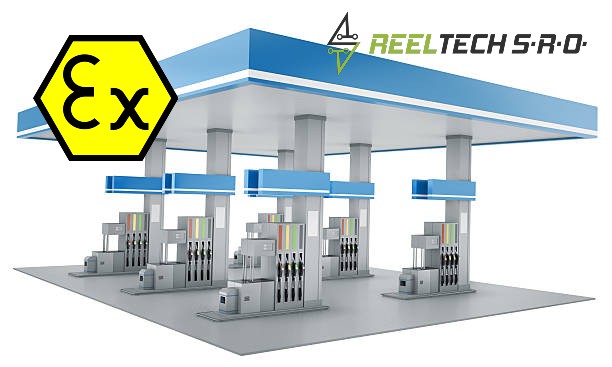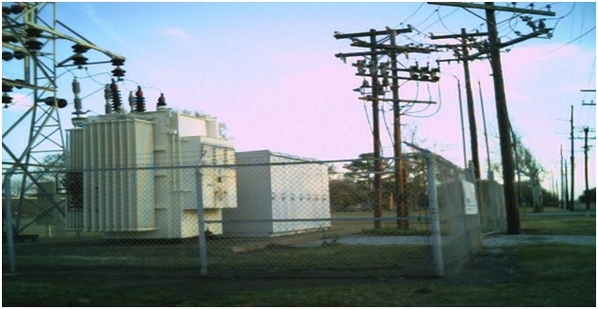Revision EX, explosion
High Voltage and Explosive Environment Revision
We have staff trained for high voltage and explosive environment ATEX inspections).

Explosive environment and electrical parts are strictly controlled and must be frequently revised, therefore individual parts must be thoroughly revised according to the standards and regulations stated in the European Directive 94/09/EC (ATEX I), which was implemented in our country in NV No.117/2001 Coll.
The inspection of equipment in explosive atmospheres, also known as EX inspection, is an important part of the management and maintenance of systems used in environments where flammable gases, liquids or dust mixtures are present. These environments are referred to as EX (Ex-zones) and are subject to strict regulation and explosion protection standards.
EX review focuses on the verification and safety assessment of equipment in EX-zones ( explosion hazard zones) , which are designed and intended for use in explosive atmospheres. This inspection is carried out to ensure that the equipment is correctly installed, correctly earthed, securely sealed and complies with the relevant safety standards.
EX inspection includes inspection and testing of electrical systems, electrical apparatus, lighting fixtures, switches, motors and other equipment used in EX zones. Space constraints, climatic conditions and risks associated with explosive environments are also examined.
The EX review also takes into account the EX zone designation, which determines the level of risk due to the presence of flammable substances. Correct identification and marking of EX zones is important for safe operation and minimising the risk of explosion.
EX inspection professionals must have specialist knowledge and experience of relevant standards and guidelines such as ATEX (Atmosphères Explosibles) or IECEx (International Electrotechnical Commission System for Certification to Standards relating to Equipment for use in Explosive Atmospheres). These experts carry out thorough inspections, tests and evaluations of the equipment to ensure safety and compliance with the relevant standards.
Inspection of equipment in explosive atmospheres is an essential part of operating in EX-zones and ensures worker safety and operation in environments with explosive substances. Thorough EX inspection is key to minimising the risk of explosion and ensuring that
Our staff have many years of experience in these types of environments. We also perform baseline OPaOS / revisions for biogas plants, cogeneration units and gas control stations.
Explosion hazard areas:
- Areas with explosion hazards of flammable gases and vapours
- Areas with explosion hazards of combustible dusts
- Explosive hazard areas
The Electrical Specialist/Review Technician must properly assess the selection of the EEx product or equipment for the space as part of the OPaOS EZ (installation).
What objects have we already inspected?
- Biogas station
- Petrol filling station
- Warehouse with explosion hazard of combustible dusts and vapours
- Pumping stations
- Paint shop and paint booth
- Regulating gas lateral
- Chemical plants: chemical plants where chemicals are produced and processed often work with flammable gases and liquids. Examples of facilities include chemical reactors, separation columns, storage tanks and pipe systems.
- Oil refineries: refineries process crude oil into various products. These facilities are exposed to flammable gas and liquid mixtures as well as dust particles. Examples of equipment include distillation units, rectification columns, compressors and storage tanks.
- Petrochemical Plants:Petrochemical plants are engaged in the production of chemical products from petroleum or natural gas. Examples of plants include crackers, hydrocrackers, storage tanks, and pipe systems.
- Distribution and storage of fuels: Facilities involved in the distribution and storage of fuels, such as oil terminals, gas stations and fuel depots, are exposed to flammable gas and liquid mixtures. Examples of facilities include fuel storage tanks, pipe systems, pumping stations, and security equipment.
- Mining and processing plants: raw materials such as coal, metal ores and minerals are mined and processed in mining and processing plants.
- Pharmaceutical plants: pharmaceutical plants where drugs and pharmaceutical products are manufactured require strict control and inspection of equipment in explosive environments. Examples of equipment include mixing and separation units, reactors, dryers, and storage tanks.
For our customers we provide Inspections, Maintenance, Service as well as the activity of the Responsible Person
The activities of the person responsible for the operation of the electrical installation are governed by STN 34 3100 , and Act 124/2006 Coll. For customers we carry out this activity through our technician.
STN 343100.
2.14 the person responsible for the operation of the electrical installation: an authorised person with direct management responsibility for the operation of the electrical installation; where required, part of the responsibility may be delegated to other persons within the meaning of this standard; he shall meet the qualifications of a knowledgeable person with a higher qualification.
3.3 For each electrical installation, the person responsible for its operation must be identified
Act 124/2006 Zz - § 13- (5) The employer is obliged to designate an employee to carry out the activities provided for by special regulations, which are necessary to ensure occupational safety and health in the use of buildings and their components, the operation of work equipment and the use of work procedures.
You can leave the performance of baseline and periodic high voltage checks to us at any time.

Who are affected by explosive atmosphere equipment inspections?
Inspection in explosive atmospheres applies to all electrical equipment and wiring located in explosive atmospheres. These areas are defined in Slovak Government Regulation No. 393/2006 Coll. on minimum requirements for ensuring occupational safety and health in explosive atmospheres.
Inspection in explosive atmospheres is carried out in accordance with EN 60079-17, which specifies the requirements for the inspection of electrical equipment and wiring in these areas. The inspection is carried out to determine their technical condition and functionality in terms of explosion safety.
Inspection in an explosive atmosphere includes the following activities:
Visual inspection of the equipment or wiring for mechanical damage, corrosion, wear and tear, etc.
Inspection of electrical circuits and components for functionality and safety
Measurement of electrical quantities such as voltage, current, resistance, impedance, etc.
Carrying out tests such as insulation test, short-circuit test, insulating oil test, etc.
Based on the results of the review, the review engineer shall issue a review report containing the conclusions of the review and recommendations for correcting the identified deficiencies.
Inspection in explosive atmospheres shall be carried out at the following intervals:
- An initial inspection is carried out before the equipment or wiring is put into operation.
- Periodic inspection shall be carried out at regular intervals as specified in EN 60079-17.
- An emergency inspection is carried out after an accident, injury or other event that may have affected the safety of the equipment or wiring.
Inspection in explosive atmospheres may only be carried out by a person with a valid certificate of professional competence to carry out inspections of electrical equipment and wiring in explosive atmospheres.
